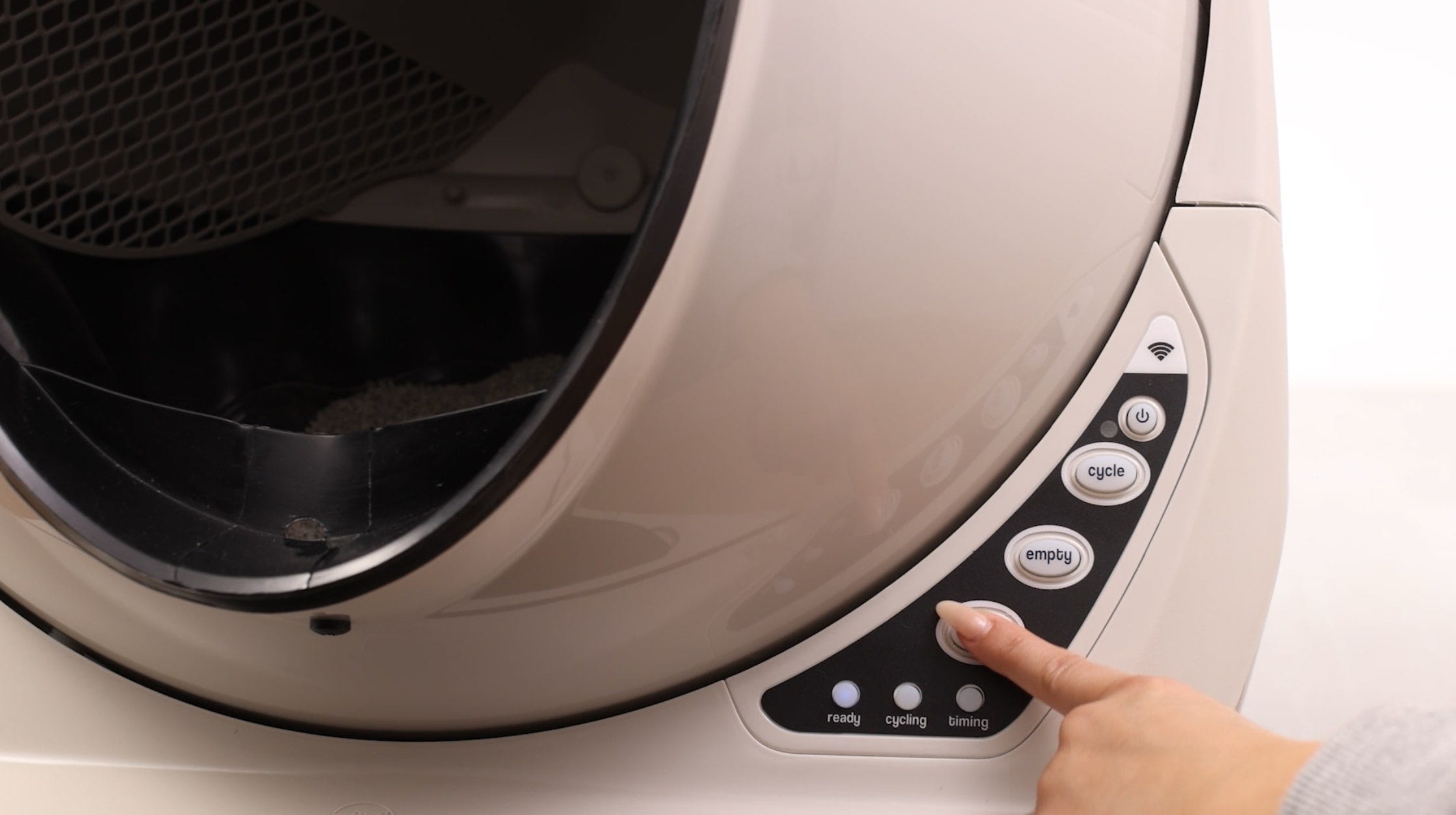The store will not work correctly in the case when cookies are disabled.
Litter-Robot 3: Reset button

The Reset button will reset your Litter-Robot's cat sensor. You can think of the cat sensor as the scale and the Reset button as a way to zero the scale.
What can the Reset button do?
Reset the cat sensor:
When pressed while the globe is in the Home position with the blue light on, it resets the cat sensor.
Pause/cancel a cycle:
When pressed during a cycle, it pauses the cycle. If pressed again while paused, it will abort the cycle.
Cancel cycle delay:
If pressed when the red light is on, it cancels the cycle delay and the unit returns to standby (blue light on).
Activate control panel lockout:
Press and hold the Reset button to activate control panel lockout, indicated by the blue light blinking momentarily.
While in control panel lockout mode, press and hold the Reset button to exit the mode, indicated by the blue light blinking momentarily.
This setting will disable all button functions on the control panel while allowing the unit to function normally in automatic mode. During control panel lockout you can still turn the unit off by pressing and holding the Power button for 3 seconds.
Need technical support?
Didn't find what you're looking for?
Phone and Chat support available Mon-Fri: 9AM-7PM EST and Sat: 9AM-5PM EST, or submit a ticket anytime.